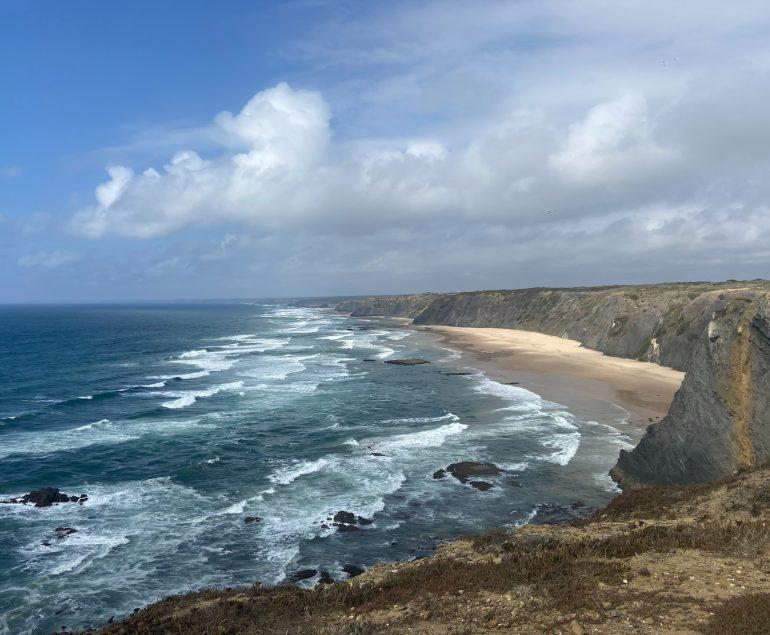The Fort of São Miguel Arcanjo (St. Michael the Archangel) is located in the Portuguese town of Nazaré, in the Leiria District. It was built in 1577 but has been remodelled and expanded numerous times since then. The fort is a major tourist attraction, owing in part to its closeness to a surfing region renowned for its huge waves. It currently serves as both a lighthouse and a museum, with an emphasis on surfing.

The Fort of São Miguel Arcanjo is perched on cliffs, surrounded on three sides by the sea. In 1577, King Sebastian I of Portugal ordered the construction of a basic fort with the purpose of safeguarding Nazaré’s fishing, shipbuilding, and wood trade businesses against raids by Algerian, Moroccan, Dutch, and Norman pirates. It was armed with four pieces of cannon by 1595. Between 1639 and 1641, more construction was completed, increasing the number of cannon pieces to six. The fort was upgraded once again in 1644, under the orders of King John IV, when it gained its current shape and name. It has an uneven design, which was essential to accommodate the promontory’s contours. King John commissioned the placement of a limestone picture of St. Michael the Archangel over the entry, with the phrase “EL REY DOM JUAN-1644”.

It was held by a group of 50 troops during the French invasion of Portugal in 1807 or 1808 after its artillery pieces were transferred to the Citadel of Cascais to offer defence for Lisbon. The French were imprisoned by the indigenous people when a group of students convinced the invaders to surrender by falsely claiming the Portuguese had sent reinforcements. Simultaneously, residents of Nazaré travelled south by boat to Cascais in quest of weaponry that would enable them to fight French troops going north from Peniche to assist the French garrison. The fort became a symbol of popular resistance, but the French invaders eventually returned, murdering residents and setting fire to their homes and boats in retaliation.
In 1831, the fort held a military unit backed up by two 12-gauge pieces, which were later relocated to Peniche.
The fort was the scene of clashes during the Liberal Wars, or Portuguese Civil War, which pitted followers of King Pedro IV and King Miguel I against one another.
Following D. Miguel I’s exile in July 1834, the fort’s stone figure of St. Michael the Archangel was assaulted by Pedro supporters, who threw down the fort’s walls to the shore. While it was later returned to its original place, it remains damaged. Following this, the fort remained privately held until 1902, when it was expropriated by the state.

Lighthouse
In 1903, a lighthouse and keeper’s quarters were built, largely to aid local fishermen. On December 1, 1903, the lighthouse was inaugurated. It is currently a red lantern with an 8-metre height, a white light, and a range of 14 nautical miles located 50 metres above sea level. Additionally, a foghorn is located on the premises. The walls were restored in 1907, and additional work began on the walls in 1941. In 1977, work was completed on restoring the main gate and waterproofing the terrace. In 2005-06, drainage improvements were made. Although the building is now well preserved, it is in danger of collapsing due to the south side’s extensive erosion.
Museum
Since 2014, visitors have been able to visit the fort’s museum section. It has an exhibition on the German submarine U-963, which was scuttled off the coast of Nazaré on May 20, 1945. Additionally, there is an Interpretation Center that describes the impact of the Nazaré Canyon, which is located just off the coast of Nazaré and is believed to be Europe’s largest canyon, with a maximum depth of at least 5,000 metres. The canyon is believed to be the source of the high waves that make Nazaré a popular surfing destination.


